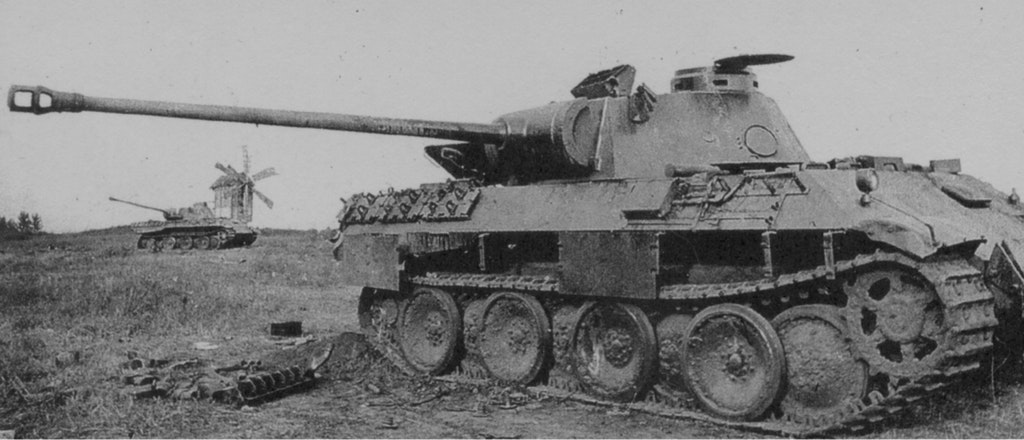
Just a little more on armor exchange ratios at Kursk. This is taken from pages 640-641 of my book.
It has been determined that the German tank losses due to mines was somewhere around 131 for the 5th of July. On the 6th of July, it gets harder to determine the mine losses, and an estimation has placed the losses tentatively at 69 tanks. This is 37.95 percent of the armor loss for those two days and 13.11 percent of total armor losses for 4 to 18 July. After that, it appears that the percentage of tanks lost to mines declined to perhaps five percent or less for the subsequent days. Overall, mines probably caused around 15 to 20 percent of German tank losses during the course of the entire battle.
If one does a loss-exchange ratio analysis, less the German mine losses in the first two days, the following figures are generated:
Decline in Strength
First Tank Army (less XXXI TC & 2 Bdes) 289
XLVIII Panzer Corps 332
less Panther breakdowns -115
less mine losses, 5th -54
less mine losses, 6th -32
——
131
This now shows an exchange ratio of 2.21 to one in favor of the German XLVIII Panzer Corps. A look as the SS Panzer Corps shows a very lopsided result:
Decline in Strength
Other Voronezh Front Armor 385
SS Panzer Corps 187
less mine losses, 5th -33
less mine losses, 6th -14
——
140
This shows an exchange ratio of 2.75 to one in favor of the Germans. Still, if one could factor out the other weapons effects, it would appear that the Germans, in their tank operations, were achieving kill ratios of two to one or greater. Furthermore, it does appear that the kill ratios achieved by the SS armor was superior to the neighboring Wehrmacht units, although it also appears that the primary reason for this was the way Soviet armored operations were conducted east of the Vorskla (under Vatutin and Chistyakov’s direction) as opposed to those west of the Vorskla (under Katukov’s command).
I left out the footnotes.
P.S. Picture is labeled: “Panzer-Abteilung 51 Panthers knocked out in a minefield ambush while advancing in Cherkasy, Ukraine – July 1943. Source: https://www.reddit.com/r/DestroyedTanks/comments/5iabwq/panzerabteilung_51_panthers_knocked_out_in_a/
P.P.S. Suspect they mean Cherkasskoye, Russia.
